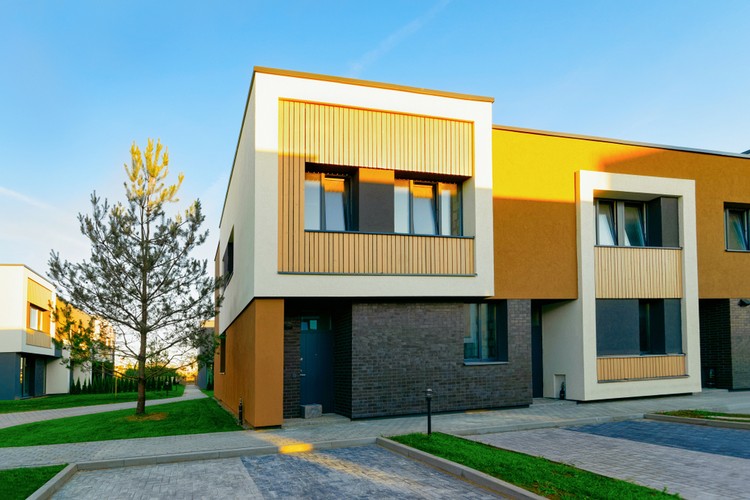What You Need to Know About Prefabricated Homes and Their Benefits
Prefabricated homes have transformed from simple, cookie-cutter structures to sophisticated, customizable housing solutions that meet diverse needs and preferences. These factory-built homes are constructed in sections off-site and then transported to their permanent location for assembly. As housing costs rise and environmental concerns grow, prefabricated homes have gained popularity among homebuyers seeking efficiency, sustainability, and affordability without sacrificing quality or aesthetics.

How Prefabricated Homes Balance Comfort, Style, and Affordability
Prefabricated homes have evolved significantly from their humble beginnings. Today’s prefab homes incorporate innovative design elements, energy-efficient features, and quality materials that rival traditional site-built homes. Modern manufacturing techniques allow for customization options previously unavailable, including open floor plans, large windows for natural lighting, and various exterior finishes that complement different architectural styles.
The controlled factory environment enables precise construction that minimizes material waste and optimizes quality control processes. This methodical approach translates to better insulation, tighter building envelopes, and improved energy efficiency. Homeowners benefit from reduced utility bills while enjoying comfortable living spaces designed to modern standards. Additionally, many manufacturers offer packages that include energy-efficient appliances, smart home technology, and sustainable building materials, providing both comfort and style within a more affordable price range than comparable site-built homes.
Key Benefits of Prefab Housing Including Faster Construction and Efficiency
One of the most compelling advantages of prefabricated homes is their significantly reduced construction timeline. While traditional homes typically take six months to a year to build, prefab homes can often be completed in 8-16 weeks from factory production to final on-site assembly. This accelerated timeline occurs because construction can proceed regardless of weather conditions, and multiple components can be built simultaneously.
The efficiency extends beyond time savings to include material usage. Factory construction minimizes waste through precise cutting and inventory management, with some manufacturers achieving 80% less waste than traditional construction sites. This efficiency also translates to cost savings, as bulk material purchasing, standardized processes, and reduced labor hours contribute to overall affordability.
Environmental benefits represent another crucial advantage. Prefabricated construction generally produces less site disturbance and pollution. Many prefab manufacturers prioritize sustainable practices, incorporating recycled materials, implementing water-saving fixtures, and designing for optimal energy efficiency. These homes often exceed standard building codes for insulation values and energy performance, resulting in lower carbon footprints and reduced environmental impact throughout their lifecycle.
What to Consider When Deciding if a Prefabricated Home is Right for You
Before committing to a prefabricated home, potential buyers should carefully evaluate several factors. Land acquisition and preparation requirements differ from traditional construction. You’ll need a suitable plot with proper access for large component delivery, and site preparation costs—including foundation work, utility connections, and permits—must be factored into your budget. Some remote locations may present logistical challenges that increase transportation costs.
Financing represents another important consideration. Some lenders have specific requirements for prefabricated homes, and traditional mortgage processes may differ. Because payments to manufacturers often occur before the home is delivered and assembled, construction loans or manufacturer financing options may be necessary. Research local zoning regulations as well, as some areas have restrictions or special requirements for prefabricated structures.
Customization limitations should also inform your decision. While modern prefab homes offer numerous design options, certain structural modifications may be impossible or cost-prohibitive due to manufacturing constraints. Understanding the balance between standardization (which enables efficiency and affordability) and personalization is essential when setting expectations for your new home.
Prefabricated Home Cost Considerations and Provider Options
The cost of prefabricated homes varies considerably based on size, design complexity, finishes, and location. Basic modular homes may start around $80-150 per square foot, while high-end prefab homes with premium finishes can exceed $300 per square foot. These figures typically include manufacturing costs but may exclude site preparation, foundation, utility connections, and transportation—variables that can significantly impact overall expenses.
| Prefab Home Type | Average Cost Range (per sq ft) | Typical Size Range | Notable Features |
|---|---|---|---|
| Manufactured Homes | $50-100 | 900-2,500 sq ft | HUD-certified, most affordable option, limited customization |
| Modular Homes | $100-200 | 1,000-3,000+ sq ft | Built to local building codes, moderate customization, resembles traditional homes |
| Panelized Systems | $150-250 | 1,200-3,500+ sq ft | Flat panels assembled on-site, good customization options |
| Kit Homes | $80-200 | 800-3,000+ sq ft | DIY-friendly packages, variable customization |
| Luxury Prefab | $250-400+ | 1,500-4,000+ sq ft | High-end finishes, architectural designs, extensive customization |
Prices, rates, or cost estimates mentioned in this article are based on the latest available information but may change over time. Independent research is advised before making financial decisions.
Several reputable prefabricated home manufacturers operate nationwide, including Clayton Homes (offering affordable manufactured and modular options), Method Homes (specializing in contemporary, eco-friendly designs), Blu Homes (featuring innovative folding technology for transportation), and Plant Prefab (focusing on sustainable custom homes). Regional manufacturers may offer additional benefits like familiarity with local building codes and reduced shipping costs.
The Future of Prefabricated Housing in Modern Living
Prefabricated housing continues to evolve with technological advancements and changing consumer preferences. Smart home integration, improved energy management systems, and innovative materials are becoming standard features rather than premium upgrades. Many manufacturers now offer net-zero energy options that produce as much energy as they consume, appealing to environmentally conscious homebuyers.
The industry is also responding to demographic shifts with designs that accommodate multigenerational living, aging in place, and flexible work-from-home spaces. As urban housing shortages persist, compact prefab units provide efficient solutions for infill development and accessory dwelling units. These adaptable structures reflect how prefabricated housing continues to address contemporary challenges while maintaining the core benefits of efficiency, sustainability, and affordability.
Prefabricated homes have established themselves as legitimate alternatives to traditional construction, offering compelling advantages for modern homeowners seeking quality housing solutions that align with their values, needs, and budgets. With proper research and realistic expectations, these innovative housing options can provide comfortable, stylish, and efficient living spaces for various lifestyles and preferences.




